

Invited Speakers' Biosketches
Yves Barral (Zurich, Switzerland)
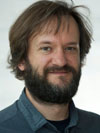
Dr. Yves Barral is since 2005 Associate Professor at the Institute of Biochemistry at the ETH Zurich. His research concerns working on the coordination of the cytoskeleton and the cell cycle in yeast. He will also develop new genetic techniques to address related issues in the multicellular Nematode C.elegans. Prof. Barral studied Genetics and Biochemistry at the Ecole Normale Superieure in Paris, and completed his diploma work in Microbiology at The Pasteur Institute in 1989. Prof. Barral then started his Ph.D. studies on the genetic analysis of cell cycle control which he carried out at both the Commissariat à l'Energie Atomique (Saclay, France) and the Friedrich-Miescher Laboratory of the Max-Planck Institute (Tübingen, Germany). In December 1994 Prof. Barral obtained his Ph.D. from the Pierre und Marie Curie University in Paris. He then went on to work as a postdoctoral fellow and postdoctoral associate in the Department of Biology, Yale University (New Haven, USA) up until July 1999, focussing on the regulation of cellular morphogenese during cell division. Since 1999 Yves Barral has been Assistant Professor of Biochemistry at the ETH Zurich.
![]()
Margaret Buckingham (Paris, France)
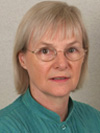
Margaret Buckingham is an Emeritus Director of Research in the C.N.R.S. and Professor at the Pasteur Institute. She is a member of EMBO, the Academia Europaea, the French Academy of Sciences and the National Academy of Sciences, USA. After graduating from Oxford University, UK, where her thesis work was on histone modifications, she joined F. Gros's laboratory at the Pasteur Institute to work on mRNA changes in gene expression during skeletal muscle cell differentiation. She continued to work on this model, studying skeletal myogenesis in the mouse embryo in her own research group. Her laboratory currently works on the stem cells of skeletal muscle and how their survival and entry into the myogenic programme are regulated by Pax genes, both in the embryo and the adult. They are also interested in cardiogenesis, notably in the origin and contribution of the second heart field and corresponding second myocardial cell lineage, during the formation of the mammalian heart.
![]()
Francesco Cecconi (Rome, Italy)
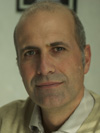
Francesco Cecconi is Full Professor of Developmental Biology at the University of Rome Tor Vergata. He is EMBO member since 2012 and serves as a member of the AIRC scientific commettee since January 2011. He has been recently appointed as Unit Head (Cell stress and survival) of the Danish Cancer Society Research Center in Copenhagen, Denmark. As a Max-Planck-Institute researcher (Göttingen, Germany) in the field of developmental cell death, he has described the knockout phenotype of the Apaf1 gene (1997), a master regulator of mitochondria-dependent apoptosis. In November 1999, he was awarded a Telethon Assistant Scientist position, and until June 2005 he has been Group Leader of the Developmental Molecular Biology Lab at the Department of Biology, University of Tor Vergata, Rome, Italy. His main scientific interest in this period has been the link between the apoptosome and cell death in neurodegeneration. In December 2004, he was appointed as Associate Telethon Scientist and, after his seminal work on the pro-autophagic molecule Ambra1 (2007), he became a world-leader in the field of autophagy in development and disease, while producing in parallel key papers on the role played by apoptotic molecules in synaptic degeneration. Indeed, Prof. Cecconi has developed a strong expertise in molecular neurobiology to study the molecular mechanisms that underlie memory formation in mouse models of neurodegenerative disorders. Also, his team is dissecting the regulatory network of the autophagy signalling pathway, a central player in cancer ontogenesis and progression.
![]()
Davide Corona (Palermo, Italy)
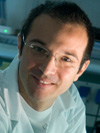
I became interested in chromatin dynamics during my graduate studies in Peter Becker’s laboratory at EMBL-Heidelberg (Germany), where I characterized CHRAC, a Drosophila multi-subunit chromatin remodeling complex that uses the energy of ATP to mobilize nucleosomes and promote global chromatin fluidity. I found that ISWI, the catalytic subunit of CHRAC, is a nucleosome-stimulated ATPase. This molecular engine works together with other proteins in CHRAC to slide nucleosomes. These studies contributed to the molecular and biochemical characterization of CHRAC and revealed some of the mechanistic aspects of the chromatin remodeling reactions catalyzed by ATP-dependent chromatin remodeling complexes. To complement my training in protein biochemistry, I obtained postdoctoral training in the use of classical and molecular genetics in John Tamkun's laboratory at UCSC. The aim of my postdoctoral work was to clarify the biological function of the ISWI ATPase by identifying factors with which it interacts in vivo. These studies showed that ISWI plays a global role in chromatin compaction and transcriptional repression. In particular I found that specific acetylation state of chromatin can influence the ability of ISWI to organize chromatin and regulate gene expression. These studies have shed light on the function and regulation of ISWI in vivo and improved our understanding of how the activity of ATP-dependent chromatin remodeling factors and histone modifying enzymes are coordinated. As an independent investigator I am using the fly as a model system and a combination of genetic and biochemical approaches to study how ATP-dependent chromatin remodeling activities are regulated and integrated into the larger regulatory network of ncRNA’s and post-translational modifications to maintain epigenetic memory and stem cell determination.
![]()
Ana Maria Cuervo (Bronx, NY, USA)
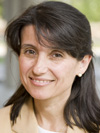
Ana Maria Cuervo is the Robert and Renee Belfer Chair for the Study of Neurodegenerative Diseases, Professor in the Departments of Developmental and Molecular Biology and of Medicine of the Albert Einstein College of Medicine and co-director of the Einstein Institute for Aging Studies. She obtained her M.D. degree and a Ph.D. in Biochemistry and Molecular biology from the University of Valencia (Spain) in 1990 and 1994, respectively, and received postdoctoral training at Tufts University, Boston. In 2002, she started her laboratory at the Albert Einstein College of Medicine, where she continues her studies in the role of protein-degradation in neurodegenerative diseases and aging. Dr. Cuervo’s group is interested in understanding how altered proteins can be eliminated from the cells. Her group has recently linked alterations in lysosomal protein degradation with different neurodegenerative diseases including Parkinson’s, Alzheimer’s and Huntington’s disease. They have also proven that restoration of normal lysosomal function prevents accumulation of damaged proteins with age, demonstrating this way that removal of these toxic products is possible. Dr. Cuervo is considered a leader in the field of protein degradation in relation to biology of aging and has been invited to present her work in numerous national and international institutions, including among others the Robert R. Konh Memorial Lecture, the NIH Director’s Lecture, the Roy Walford Endowed Lecture and the Feodor Lynen Lecturer. She has organized and chaired international conferences on protein degradation and on Aging, belongs to the editorial board of scientific journals in this topic and she is currently co-Editor-in-Chief of Aging Cell and associate editor of Autophagy. She was the recipient of the 2005 P. Benson Award in Cell Biology, the 2005/8 Keith Porter Fellow in Cell Biology, the 2006 Nathan Shock Memorial Lecture Award, the 2008 Vincent Cristofalo Rising Start in Aging Award, the 2010 Bennett J. Cohen award in basic aging biology and the 2011 Marshall Horwitz Prize for excellence in resesearch. She is currently member of the NIH/NIA Scientific Council.
![]()
Pietro De Camilli (New Haven, CT, USA)
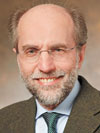
Pietro De Camilli received his M.D. degree in 1972 from the University of Milano where he worked with Jacopo Meldolesi. He carried out postdoctoral work with Paul Greengard, then at Yale University, and subsequently had faculty appointments at the University of Milano prior to returning to the Yale, where he is currently Eugene Higgins Professor in the Department of Cell Biology (Department chair from 1997 to 2000), HHMI investigator and Founding Director of the Yale Program for Cellular Neuroscience, Neurodegeneration and Repair. His research focuses on mechanisms in the dynamics and traffic of cell membranes in physiology and disease, with emphasis on the neuronal synapse. His studies on synaptic vesicle dynamics have contributed to the general fields of exocytosis and, more recently, endocytosis. His research has provided insight into mechanisms of membrane fission and has revealed ways through which membrane-?associated proteins can generate, sense and stabilize lipid bilayer curvature. His discovery and characterization of the role of phosphoinositide metabolism in the control of endocytosis have broad implications in the fields of phospholipid signaling and membrane traffic. His presentation will focus on newest developments in the identification of mechanisms that control the phosphoinositide content of the plasma membrane and in the role of phosphoinositides in the regulation of plasma membrane-?endoplasmic reticulum contact sites. Dr. De Camilli was elected to the European Molecular Biology Organization (EMBO) in 1987, to the National Academy of Sciences (USA) and to the American Academy of Arts and Sciences in 2001 and to the Institute of Medicine (USA) in 2005.
![]()
Luigi Fontana (St.Louis, USA)
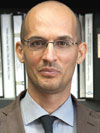
Fontana’s research focuses on the role of diet and exercise in preventing age-associated chronic disease such as cancer, diabetes and cardiovascular disease, and in promoting healthy successful aging. He is an internationally recognized scientist, author and expert in the fields of nutrition and healthy aging. Fontana graduated with highest honors from the Verona University Medical School, where he completed his internship and residency in internal medicine. He also received a Ph.D. in metabolism from the University of Padua Medical School.
![]()
Christian Frezza (Cambridge, United Kingdom)
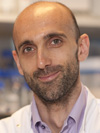
Christian Frezza is currently a Group Leader at the Medical Research Council Cancer Cell Unit in Cambridge, UK. He studied Medicinal Chemistry at the University of Padova, Italy, and gained his MSc in 2002 after a period of research on mitochondrio-toxic photoactivable drugs. He then joined the laboratory of Luca Scorrano at the Venetian Institute of Molecular Medicine in Padova to start a PhD on mitochondrial dynamics and apoptosis. In 2008 he moved to the Beatson Institute of Cancer Research in Glasgow as recipient of an EMBO Long Term Fellowship where he investigated the role of mitochondrial defects in tumorigenesis. In particular, he studied the role of fumarate hydratase, an enzyme of the Krebs cycle, as a tumour suppressor lost in renal cell cancer. Christian’s research is aimed at the elucidation of the role of altered metabolism in the process of cellular transformation. His major goal now is to exploit this biochemical knowledge to pioneer novel therapeutic strategies for cancer.
![]()
Campbell Gourlay (Canterbury, United Kingdom)
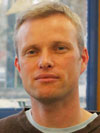
Campbell Gourlay began his career at The John Innes Centre in 1996 where he studied the genetic control of leaf development. Following this he began to work with budding yeast as a model eukaryote in the lab of Kathryn Ayscough, where he investigated the role of actin in the process of endocytosis. During this time he discovered a link between actin, the regulation of mitochondrial function and the control of ageing and apoptosis. This led to his involvement in the emerging field of yeast apoptosis, which has popularised the novel concept that unicellular organisms possess the ability to undergo programmed cell death as an altruistic act for the betterment of a population. In 2006 he was awarded a career development fellowship by the Medical Research Council to establish his own lab at the University of Kent where he was instrumental in founding the Kent Fungal Group. The Gourlay lab maintains a strong interest in the role that actin plays in the control of homeostatic mechanisms that contribute to healthy ageing. Of particular interest are interactions between actin, mitochondria and signal transduction pathways that are crucial to cellular response to stress. The lab also uses yeast as a model eukaryote to study a number of aspects of cancer biology and the toxicity associated with protein aggregations linked to human disease.
![]()
Ludger Johannes (Paris, France)
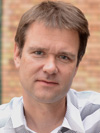
Ludger Johannes is Research Director (DR1) at INSERM. Since 2001, he is heading the Traffic, Signaling and Delivery Group in the Cell Biology Department (UMR144 CNRS) of the Curie Institute. His research aims at establishing fundamental concepts of endocytosis and intracellular trafficking. The Johannes group has made two major contributions in this context: the discovery of retrograde trafficking between early endosomes and the Golgi apparatus, and the demonstration that dynamic protein-induced glycosphingolipid reorganization acts as a driving force for membrane invagination in clathrin-independent endocytosis. These studies have been published in high-ranking journals (Cell, Nature, Dev Cell, Nat Cell Biol, J Cell Biol, …). He also aims at exploiting these discoveries in fundamental membrane biology for the development of innovative cancer therapy strategies. His basic studies have allowed him to validate the B-subunit of Shiga toxin (STxB) as an "intracellular pilot" for the delivery of therapeutic compounds to precise intracellular locations of dendritic and tumor cells (9 patent families, 4 of which are delivered in the US, Europe and other countries). These findings are the basis for a translational research program on intracellular delivery that he coordinates at the Curie Institute. These findings are also exploited in collaboration with biotech companies, two of which he has founded in 2012 (STxB Pharma Technologies Inc and ImmunoTargets SAS). Ludger Johannes serves on CNRS and INSERM study cell biology sections, and is member of the editorial boards of several international journals (including PLoS One and Traffic), and EMBO member since 2012.
![]()
Gabriella Minchiotti (Naples, Italy)

Gabriella Minchiotti is CNR Senior Scientist at the Institute of Genetics and Biophysics “A. Buzzati-Traverso” in Naples. She received her PhD in Molecular and Cellular Genetics from the University of Naples Federico II, studying the molecular mechanisms involved in the transcription of LINEs in Drosophila melanogaster. During her post-doctoral studies she became interested in cell differentiation and embryo development, which took her in the field of stem cells. She has worked in National and International Research Centers, such as the European Institute of Oncology (IEO) in Milan, the Ecole Normale Superieure in Paris and the Flander Institute for Biotechnology (VIB) in Lueven, Belgium, enriching her developmental and cell biology background. In 1998 she became CNR Researcher at the Institute of Genetics and Biophysics “A. Buzzati-Traverso” and since 2004 she is Group Leader of the Stem Cell Differentiation Unit and co-founder and co-coordinator of the Stem Cell Fate Laboratory at the same Institute. In 2007 she was appointed CNR Senior Scientist. Her current research focuses on the molecular basis of pluripotency and differentiation of stem cells. Her main interest is to understand how to direct stem cell differentiation along specific pathways and to develop molecular tools to target tumour initiating cells. More recently, her research interest is also focused on skeletal muscle stem cells and skeletal muscle regeneration, assessing the potential therapeutic value of the Cripto protein in alleviating muscle disease.
![]()
Luigi Naldini (Milan, Italy)
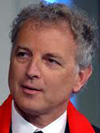
Luigi Naldini received his M.D. from the University of Torino, Italy in 1983 and his Ph.D. from the University of Rome in 1987, carried out post-doctoral work in the U.S.A. with Yossi Schlessinger (1987-89), was visiting scientist with Inder Verma and Didier Trono at the Salk Institute (1994-96), subsequently had independent appointments at Cell Genesys, California (1996-98) and the University of Torino prior to moving to Milan in 2002, where he is currently the Director of the San Raffaele Telethon Institute for Gene Therapy and Professor at the San Raffaele University. In his early career, he identified the ligand for the Met receptor with Hepatocyte Growth Factor. For the last 19 years, Luigi Naldini has pioneered the development and applications of lentiviral vectors for gene transfer, which have become one of the most widely used tool in biomedical research and, upon recently entering clinical testing, are providing a long sought hope of cure for several currently untreatable and otherwise deadly human diseases. Throughout this time he has continued to investigate new strategies to overcome the major hurdles to safe and effective gene transfer, bringing about innovative solutions that not only are being translated into new therapeutic strategies for genetic disease and cancer but have also allowed novel insights into hematopoietic stem cell function, induction of immunological tolerance and tumor angiogenesis. He has published 185 papers in international journals (total Impact Factor 1,905 with average I.F. 10.53 per paper), which have been cited >20,500 times (since 1996; Scopus “h” index: 68). He is the current President of the European Society of Gene and Cell Therapy, member of EMBO since 2008, recipient of an ERC Advanced Investigator Grant and was awarded the Premio Sapio for Italian Research in 2012.
![]()
Gioacchino Natoli (Milan, Italy)
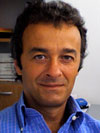
Gioacchino Natoli is a group leader at the Department of Experimental Oncology of the European Institute of Oncology (IEO) in Milan. He obtained his MD degree and specialist training in Internal Medicine from the University of Rome. He then moved to basic research and joined the group of Michael Karin at UCSD as a postdoctoral fellow in 1998, working on NF-kB regulation of inflammation. In 2000 he became an independent investigator at the IRB (Switzerland) and in 2005 he joined the IEO. His main research interest is the transcriptional and chromatin-mediated regulation of macrophage biology and inflammatory responses.
![]()
Matthieu Piel (Paris, France)

Dr Matthieu Piel is a Tenure Scientist of the French National Center for Scientific Research (CNRS) at the Institut Curie in Paris, France, where he leads the team Systems Biology of Cell Division and Cell Polarity in the Cell Biology department. He completed his PhD in 2001 at the Institut Curie, studying the mechanisms and functions of centrosome movements and positioning in migrating and proliferating cells. After a short postdoctoral period in the same institution, he was awarded with an HFSP intenational fellowship to work in Dr. Andrew Murray’s Lab at Harvard University. There, he worked on quantitative analysis and modeling of yeast mating using microfluidics chambers developped in collaboration with the lab of George Whitesides. This study recently led to the completion of the first fully predictive model for cell polarization in external gradients of molecules. In 2005, he returned to France with the aim to develop quantitative approaches to cell biology using micro-fabricated tools and microscopy, with a focus on cell division, cell migration and cell polarity. In 2007, he started a junior team at Institut Curie. During the last years, this team has been both developing new tools and studying fundamental cell biology questions, with contributions on morphogenesis of yeast cells, migration of dendritic cells, mitotic spindle assembly and orientation, and cytokinesis in proliferating cultured cells. The unifying theme of his recent research is the effect of external physical constrains on cell morphogenesis, behavior and fate.
![]()
Rosario Rizzuto (Padua, Italy)
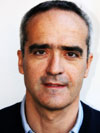
Rosario Rizzuto, M.D., Ph.D., is Professor of General Pathology and Chairman of the Department of Biomedical Sciences at the University of Padua (Italy). His research focus is the study of mitochondrial participation in cellular Ca2+ signaling, using a combination of molecular biology, biochemistry and imaging approaches in primary cells and cell lines, and in model organisms. He pioneered the use of targeted probes, and contributed some landmark observations, such as the close signaling interaction of ER and mitochondria, the effect of Bcl-2 and related oncogenes on Ca2+ homeostasis and recently the identification of the mitochondrial calcium uniporter (MCU).
![]()
Marco Sandri (Padua, Italy)
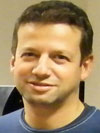
Marco Sandri is Assistant Professor at department of Biomedical Science, University of Padova. He received his M.D. degree from the University of Padova where he worked with Stefano Schiaffino. He carried out postdoctoral work with Alfred L Goldberg in Harvard Medical School and in 2005 he was awarded a Telethon Assistant Scientist position and established the lab at Venetian Institute of Molecular Medicine in Padova. He has been recently appointed as principal Investigator at Telethon Institute of Genetics and Medicine (TIGEM) in Napoli. His research focuses on signalling pathways that control muscle mass in acquired and inherited diseases. He is particularly interested in understanding the involvement of ubiquitin-proteasome and autophagy-lysosome systems in protein breakdown during catabolic conditions. His research has provided insight into mechanisms of regulation of these proteolytic systems. He was the first to identify a transcriptional-dependent program that coordinate the ubiquitin-proteasome and autophagy-lysosome systems in atrophying muscles. His research interest is focus on identification and characterization of novel genes that are involved in protein synthesis and degradation.
![]()
Massimo Santoro (Turin, Italy)
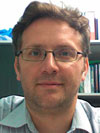
Massimo M. Santoro obtained is PhD in Molecular and Cellular Biology from the Open University, London and Dibit S. Raffaele, Milan. He received his first post-doctoral training at University of Piemonte Orientale, and then he moved to University of California, San Francisco (UCSF) where he became interested in vascular development and in health and diseased angiogenesis. In 2008, he moved back to Italy at University of Torino where he established his laboratory of Cardiovascular Biology as Assistant Professor. In 2013 he was appointed Group Leader and Associate Professor at Vesalius Research Center, University of Leuven, Belgium. He is holding an HFSP Career Developmental Award and Marie Curie Grant. His aim is to expand the current knowledge of how metabolism regulates endothelial redox homeostasis and vice-versa in healthy and diseased conditions. To accomplish this his lab has taken advantage of the innovative genetic and imaging technology as well as new molecular and biochemical approaches in vertebrate models, including zebrafish and mouse. Using a set of new cellular, molecular, and genetic approaches as well as advanced microscopy techniques he is willing to identify new redox mechanisms involved in vascular metabolism and homeostasis.
![]()
Giorgio Scita (Milan, Italy)
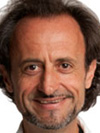
Giorgio Scita obtained his Ph.D. in Food Chemistry and Technology at the University of Parma, Italy, in the Department of Biochemistry. He received his first postdoctoral training at the University of California, Berkeley working on Vitamin A metabolism. Next, he moved to the National Cancer Institute (NCI) of the National Institutes of Health (NIH), where he worked on the integration between the retinoic acid receptor and Ras signaling pathways in Keratinocytes, under the leadership of Dr. Stuart Yuspa. In 1995, he returned to Italy, to the European Institute of Oncology (IEO), Milan where, under the supervision of Prof. Pier Paolo Di Fiore, he became interested in EGFR signaling. In 2001, he became Principal Investigator at the IEO, and in 2003 he moved to the IFOM Foundation, the FIRC Institute of Molecular Oncology, Milan, where he acquired tenured P.I status in 2008. In 2006, he was appointed associate professor of General Pathology at the School of Medicine of the University of Milan. His primary research interest has been on dissecting basic mechanisms of cell migration focussing on signaling leading to spatial and temporal regulation of actin dynamics: the powerhouse for cell motility. More recently, using breast cancer as a model system, he has been investigating the impact of membrane and actin dynamics interplay and its deregulation on tumor migration plasticity and dissemination.
![]()
Daniel St Johnston (Cambridge, United Kingdom)
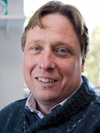
Daniel St Johnston spent his early career analysing the first asymmetries in development and how these lead to axis formation in Drosophila. This has led him to investigate how cells become polarised, how polarity controls the organisation of the cytoskeleton and how the polarised cytoskeleton is used to target key components to the correct place in the cell. His talk will focus on an analysis of how bicoid, oskar, and gurken mRNAs localise to three distinct positions within Drosophila oocyte to define the anterior-posterior and dorsal-ventral axes of the embryo. This has shown that textbook models of bicoid and oskar mRNA localisation are incorrect, and both mRNAs localise by unexpected mechanisms. He will also describe how the nucleus moves from the posterior to the anterior of the oocyte to polarise the dorsal-ventral axis. This has revealed a new type of microtubule-dependent nuclear movement and changes our view of how the AP and DV axes are related and how their relative orientation is controlled. Daniel received his B.A. in Natural Sciences (Part II Genetics) from Christ's College, Cambridge and his Ph. D. in Cellular and Developmental Biology, Harvard University under William Gelbart. From 1997 he has been a Wellcome Trust Principal Fellow at the Wellcome Trust/Cancer Research UK Gurdon Institute and from 2003 he has been Professor of Developmental Genetics at the University of Cambridge. From 2009 to the present, he has been Director of the Gurdon Institute at the University of Cambridge.
![]()
Livio Trusolino (Turin, Italy)
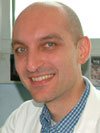
Since 2006, Livio Trusolino has been Associate Professor of Histology at the University of Turin Medical School, Italy. He received his M.D. in 1993 from the University of Turin and a Ph.D. in Human Oncology in 1997 from the San Raffaele Scientific Institute, Milan, Italy. In 2003 he finished a five-year residency in Clinical Pathology. Livio initially studied the cross-talk between growth factor receptors and adhesion molecules in tumour transformation and cancer progression. Later, his work concentrated on the characterisation of the molecular mechanisms underlying responsiveness to anti-cancer targeted therapies, using innovative preclinical models in vitro and in vivo.
![]()
Eelco Van Anken (Milan, Italy)
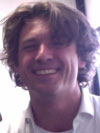
Dr. Eelco van Anken is since 2010 Group Leader at the Division of Genetics & Cell Biology at the San Raffaele Scientific Institute in Milan. His research focuses on how cells sense & respond to accumulating secretory load with an emphasis on live cell imaging of the Unfolded Protein Response. Several innovative imaging techniques are currently explored to unravel the molecular detail of these signaling processes. Eelco van Anken completed his studies in Medical Biology at Utrecht University in 1997. He performed his Ph. D. studies in the laboratories of Henk Tabak & Ineke Braakman at the Academic Medical Center in Amsterdam and at the Bijvoet Center for Biomolecular Research at Utrecht University, The Netherlands, obtaining his degree in 2003. He then went on to work as a junior scientist in the Braakman laboratory for two more years, before ensuing his postdoctoral career in the laboratory of Peter Walter at the University of California, San Francisco, USA in 2006. After 4 years in the US, Eelco van Anken started his own research group at San Raffaele in 2010 thanks to an Armenise-Harvard Career Development Award.
![]()
Natascia Ventura (Rome, Italy)
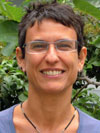
Natascia Ventura received her MD in 1999 and PhD in 2004 at the University of Rome “To Vergata” studying the role of mitochondria in the apoptotic process in different pathophysiological conditions. She mainly focused her attention on Friedreich’s ataxia, the most common human recessive ataxia, which is ascribed to severe deficiency of the nuclear-encoded mitochondrial protein frataxin. She then received her post-doctoral training at the University of Colorado at Boulder from 2004 to 2007 where she investigated the role of mitochondria in stress response and aging utilizing C. elegans a powerful genetic tool. The unexpected discovery that mitochondrial stress can extend lifespan (nowadays established also in mammals) indicated that compensatory mechanisms are activated to protect against mitochondria dysfunction. These original studies opened the door to an exciting field of research, which will lead to the identification of new potential strategies to delay aging and mitochondria associated diseases. In 2007 she went back to the University of Rome “Tor Vergata” where she began using C. elegans as primary model organism to unravel mechanistic aspects of mitochondrial-associated disease and of mitochondrial-stress control of longevity. Since 2012 she also leads a Junior Liason Group between the Leibniz Research Institute for Environmental Medicine (IUF) and the Institute of Clinical Chemistry and Laboratory Diagnostic of the Heinrich-Heine-University of Duesseldorf, Germany.
![]()
Fiona Watt (London, United Kingdom)
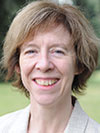
Fiona Watt obtained her DPhil from the University of Oxford and carried out postdoctoral research at M.I.T., Cambridge, USA. She established her first lab at the Kennedy Institute of Rheumatology in London and then moved to the London Research Institute. From 2006 to 2012 she was Deputy Director of the Cancer Research UK Cambridge Research Institute and Deputy Director of the Wellcome Trust Centre for Stem Cell Research, University of Cambridge. She moved to King’s College London in September 2012. The major research interest of Fiona Watt’s lab is in the interplay between intrinsic and extrinsic factors in the regulation of stem cell fate.
![]()
Joachim Wittbrodt (Heidelberg, Germany)

Jochen Wittbrodt is working and teaching at Heidelberg University where he has founded the Centre for Organismal Studies (COS Heidelberg) that he is heading as acting director. He has studied Biology and Chemistry at the LMU Munich where he received his PhD for his work in tumour genetics at the MPI for Biochemistry. After a Postdoc at the Biocentre Basle he became junior group leader at the MPI for Biophysical Chemistry in Goettingen. Here he started his work on eye development and evolution that his group has been focussing on ever since. This work was continued and extended after his move to the European Molecular Biology laboratory where he worked from 1998-2009. He became full professor at Heidelberg University in 2006 and was co-appointed as director at the Institute for Toxicology and Genetics at KIT in Karlsruhe. Since 2012 he has focussed his full attention to COS Heidelberg. His work deals with the mechanisms that control the balance between proliferation and differentiation during development, growth and regeneration and lately again tumorigenesis in the fish model system.
![]()
Please wait... Checking Javascript functionality

If you continue to see this sentence for more than 20 seconds,
please enable Javascript in your browser.
The advanced functionality of this site depends on Javascript. We are sorry, but the contents of this page cannot be displayed by your browser in its current state.
For instructions on how to activate Javascript in your browser, you may try this link (you will be re-directed to a website not associated with Azuleon but, last time we checked, the instructions there were clear and accurate).
For any further assistance, please contact the Azuleon webmaster.
Registrations
22 April 2013
to
15 July 2013
Requests to be inserted in the waiting list will be accepted until 10 August 2013.
Abstracts
22 April 2013
to
15 July 2013
Payment
29 April 2013
to
22 July 2013
Payments will be accepted until 10 August 2013 at a higher fee. See the Information page.
Scientific Committee
Antonio Musarò (Chair)
Fiorella Altruda
Paolo Bernardi
Nica Borgese
Marco Crescenzi
Antonella de Matteis
Elisabetta Dejana
Pier Paolo Di Fiore
Alfredo Fusco
Luigi Naldini
Pier Giuseppe Pelicci
Claudio Sette
Carlo Tacchetti
Organising Committee
Bronislava Matoskova
Emanuela Orlando
Paolo Pinton
Stella Zannini
Organising secretariat





